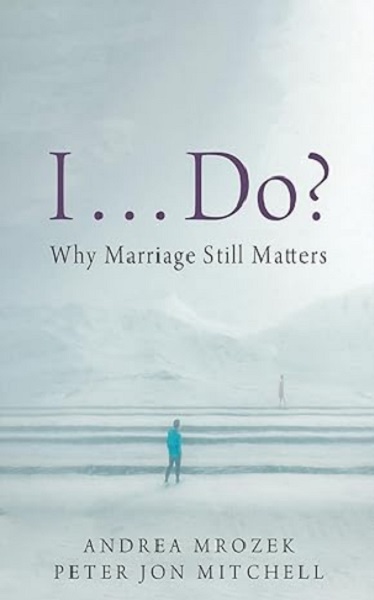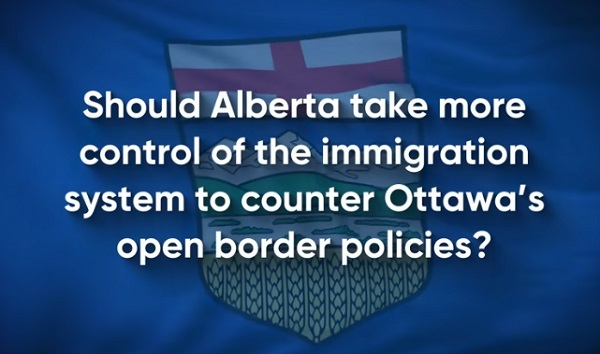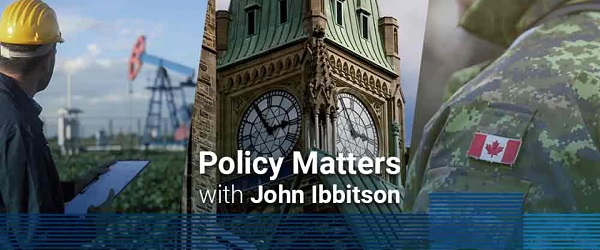Frontier Centre for Public Policy
A letter to five Canadian Churches

From the Frontier Centre for Public Policy
Two years ago, Eric Metaxas, the conservative Christian American author wrote a short, but important, book addressing the American Church. He was concerned the churches were forsaking their Christian principles in not speaking out against the anti-Christian ideologies and practices occurring throughout the U.S.
My letter is limited to admonishing the Canadian churches involved with Canada’s Indian Residential Schools. These churches have not spoken out in support of the missionaries they commissioned to work in these schools, people who poured their lives into their work, and who have been wrongly accused of abusing and murdering residential school children.
Obviously, those employees who are guilty should be condemned and punished, but those who are innocent should not be falsely accused of perpetrating horrific crimes.
Between 1883 and 1996, there were 143 Indian Residential Schools included in the Indian Residential Schools Settlement Agreement, a complex agreement between various Indigenous groups, the federal government, and the churches that managed residential schools.
The Roman Catholic Church managed 62 (43.4%) of the schools, the Church of England (Anglican) managed 35 (24.5%), the United Church (including the denominations that joined together in 1925) managed 19 (13.3%), the Mennonite Church managed 3 (2.1%), and the Baptist Church managed 1 (0.6%) residential school. The federal and territorial governments managed the remaining 23 (16.1%) schools.
There are four historical points to be reviewed.
First, in May 2021, Rosanne Casimer, Chief of the Kamloops Band, announced that ground penetrating radar (GPR) had found 215 unmarked graves of children in the residential schoolyard.
Surprisingly, this was the first public report suggesting that children buried in residential schoolyards had been murdered. There is, however, no credible evidence of murdered residential school children in the 3,500-page Truth and Reconciliation Commission (TRC) Report which was published 6 years earlier.
Second, despite being absent from the TRC’s “Calls to Action,” the federal government has awarded almost $8 million to the Kamloops band to excavate part of the schoolyard, and set aside over $300 million for other bands to search for soil anomalies or presumed graves.
Third, as expected with such strong incentives, many other bands have claimed that they too have graves of missing and presumed murdered children buried in the schoolyards on their reserves.
Finally, in an impressive gesture of support, Prime Minister Justin Trudeau knelt beside a grave in a well-known cemetery with a teddy bear in his hand decrying the genocide perpetrated by the churches. Later, he had the Canadian flags at government buildings around the world flown at half-mast for 6 months so that both Canadians and citizens of the world would mourn this Canadian tragedy.
Since the spring of 2021, almost 100 Christian churches have been vandalized, desecrated, or set on fire, supposedly because of the “genocide” that had taken place at the sites of Indian Residential Schools. Sadly, some of these churches, the Lutheran and Orthodox churches, for example, did not manage any of the schools.
No doubt, most Canadians are thankful there is no forensic evidence that children have been murdered and buried in schoolyards. Of course, there are children’s bodies in parish cemeteries that are often close to the schools, but most of them died of communicable diseases like influenza and TB, and they have been given proper funerals.
My concern is that over the last three years, the five churches that managed Indian Residential Schools have said little or nothing to defend themselves or the staff they commissioned to work in the schools.
In a time of need, both Indigenous and non-Indigenous Christians stepped forward to care for children living in residential schools. But the churches have not stepped forward to defend their staff in their time of need. These people are getting old, and they need support now. Instead, the churches have abandoned, or worse, condemned their faithful employees for abusing children.
Equally surprising, no church leader has supported the fundamental principle of Canadian law: individuals (and churches) are considered innocent until they are proven guilty.
It grieves me, and the few other living residential school employees, that our churches have not publically supported their innocent employees. Surely, they have a moral obligation to ensure that truth and justice prevail.
Eric Metaxas has tried to awaken American churches by pointing out where they have gone wrong. Should we not try to awaken Canadian churches to defend their involvement in Indian residential schools?
Is it too much to suggest that the church leaders think back to lessons learned from Martin Luther King Jr. and Dietrich Bonhoeffer who stood up for Christian principles against the evil practice of dehumanizing people—Blacks in the U.S. and Jews in Europe?
Not only will these churches be judged by the moral and ethical lessons they preach, but, more importantly, by the principles they live by. Canadians will see the true values of church leaders in their actions, especially concerning those they commissioned to work in their schools.
Rodney A. Clifton lived for 4 months in Old Sun, the Anglican residential school on the Siksika (Blackfoot) First Nation during the summer of 1966, and he was the Senior Boys’ Supervisor in Stringer Hall, the Anglican residential hostel in Inuvik during the 1966-67 school year. He is a Professor Emeritus at the University of Manitoba and a senior fellow at the Frontier Centre for Public Policy. His most recent book, with Mark DeWolf, is From Truth Comes Reconciliation: An Assessment of the Truth and Reconciliation Commission Report. The book will be out on November 5, and it can be preordered from the publisher.
Rodney A. Clifton is a professor emeritus at the University of Manitoba and a Senior Fellow at the Frontier Centre for Public Policy. He lived for four months in Old Sun, the Anglican Residential School on the Blackfoot (Siksika) First Nation, and was the Senior Boys’ Supervisor in Stringer Hall, the Anglican residence in Inuvik. Rodney Clifton and Mark DeWolf are the editors of From Truth Comes Reconciliation: An Assessment of the Truth and Reconciliation Commission Report (Frontier Centre for Public Policy, 2021). A second and expanded edition of this book will be published in early 2024.
Frontier Centre for Public Policy
New Book Warns The Decline In Marriage Comes At A High Cost

From the Frontier Centre for Public Policy
Travis Smith reviews I… Do? by Andrea Mrozek and Peter Jon Mitchell, showing that marriage is a public good, not just private choice, arguing culture, not politics, must lead any revival of this vital institution.
Andrea Mrozek and Peter Jon Mitchell, in I… Do?, write that the fading value of marriage is a threat to social stability
I… Do? by Andrea Mrozek and Peter Jon Mitchell manages to say something both obvious and radical: marriage matters. And not just for sentimental reasons. Marriage is a public good, the authors attest.
The book is a modestly sized but extensively researched work that compiles decades of social science data to make one central point: stable marriages improve individual and societal well-being. Married people are generally healthier, wealthier and more resilient. Children from married-parent homes do better across almost every major indicator: academic success, mental health, future earnings and reduced contact with the justice system.
The authors refer to this consistent pattern as the “marriage advantage.” It’s not simply about income. Even in low-income households, children raised by married parents tend to outperform their peers from single-parent families. Mrozek and Mitchell make the case that marriage functions as a stabilizing institution, producing better outcomes not just for couples and kids but for communities and, by extension, the country.
While the book compiles an impressive array of empirical findings, it is clear the authors know that data alone can’t fix what’s broken. There’s a quiet but important concession in these pages: if statistics alone could persuade people to value marriage, we would already be seeing a turnaround.
Marriage in Canada is in sharp decline. Fewer people are getting married, the average age of first marriage continues to climb, and fertility rates are hitting historic lows. The cultural narrative has shifted. Marriage is seen less as a cornerstone of adult life and more as a personal lifestyle choice, often put off indefinitely while people wait to feel ready, build their careers or find emotional stability.
The real value of I… Do? lies in its recognition that the solutions are not primarily political. Policy changes might help stop making things worse, but politicians are not going to rescue marriage. In fact, asking them to may be counterproductive. Looking to politicians to save marriage would involve misunderstanding both marriage and politics. Mrozek and Mitchell suggest the best the state can do is remove disincentives, such as tax policies and benefit structures that inadvertently penalize marriage, and otherwise get out of the way.
The liberal tradition once understood that family should be considered prior to politics for good reason. Love is higher than justice, and the relationships based in it should be kept safely outside the grasp of bureaucrats, ideologues, and power-seekers. The more marriage has been politicized over recent decades, the more it has been reshaped in ways that promote dependency on the impersonal and depersonalizing benefactions of the state.
The book takes a brief detour into the politics of same-sex marriage. Mrozek laments that the topic has become politically untouchable. I would argue that revisiting that battle is neither advisable nor desirable. By now, most Canadians likely know same-sex couples whose marriages demonstrate the same qualities and advantages the authors otherwise praise.
Where I… Do? really shines is in its final section. After pages of statistics, the authors turn to something far more powerful: culture. They explore how civil society—including faith communities, neighbourhoods, voluntary associations and the arts can help revive a vision of marriage that is compelling, accessible and rooted in human experience. They point to storytelling, mentorship and personal witness as ways to rebuild a marriage culture from the ground up.
It’s here that the book moves from description to inspiration. Mrozek and Mitchell acknowledge the limits of top-down efforts and instead offer the beginnings of a grassroots roadmap. Their suggestions are tentative but important: showcase healthy marriages, celebrate commitment and encourage institutions to support rather than undermine families.
This is not a utopian manifesto. It’s a realistic, often sobering look at how far marriage has fallen off the public radar and what it might take to put it back. In a political climate where even mentioning marriage as a public good can raise eyebrows, I… Do? attempts to reframe the conversation.
To be clear, this is not a book for policy wonks or ideologues. It’s for parents, educators, community leaders and anyone concerned about social cohesion. It’s for Gen Xers wondering if their children will ever give them grandchildren. It’s for Gen Zers wondering if marriage is still worth it. And it’s for those in between, hoping to build something lasting in a culture that too often encourages the opposite.
If your experiences already tell you that strong, healthy marriages are among the greatest of human goods, I… Do? will affirm what you know. If you’re skeptical, it won’t convert you overnight, but it might spark a much-needed conversation.
Travis D. Smith is an associate professor of political science at Concordia University in Montreal. This book review was submitted by the Frontier Centre for Public Policy.
Carbon Tax
Canada’s Carbon Tax Is A Disaster For Our Economy And Oil Industry

From the Frontier Centre for Public Policy
By Lee Harding
Lee Harding exposes the truth behind Canada’s sky-high carbon tax—one that’s hurting our oil industry and driving businesses away. With foreign oil paying next to nothing, Harding argues this policy is putting Canada at a major economic disadvantage. It’s time to rethink this costly approach.
Our sky-high carbon tax places Canadian businesses at a huge disadvantage and is pushing investment overseas
No carbon tax will ever satisfy global-warming advocates, but by most measures, Canada’s carbon tax is already too high.
This unfortunate reality was brought to light by Resource Works, a B.C.-based non-profit research and advocacy organization. In March, one of their papers outlined the disproportionate and damaging effects of Canada’s carbon taxes.
The study found that the average carbon tax among the top 20 oil-exporting nations, excluding Canada, was $0.70 per tonne of carbon emissions in fiscal 2023. With Canada included, that average jumps to $6.77 per tonne.
At least Canada demands the same standards for foreign producers as it does for domestic ones, right? Wrong.
Most of Canada’s oil imports come from the U.S., Saudi Arabia, and Nigeria, none of which impose a carbon tax. Only 2.8 per cent of Canada’s oil imports come from the modestly carbon-taxing countries of the U.K. and Colombia.
Canada’s federal consumer carbon tax was $80 per tonne, set to reach $170 by 2030, until Prime Minister Mark Carney reduced it to zero on March 14. However, parallel carbon taxes on industry remain in place and continue to rise.
Resource Works estimates Canada’s effective carbon tax at $58.94 per tonne for fiscal 2023, while foreign oil entering Canada had an effective tax of just $0.30 per tonne.
“This results in a 196-fold disparity, effectively functioning as a domestic tariff against Canadian oil production,” the research memo notes. Forget Donald Trump—Ottawa undermines our country more effectively than anyone else.
Canada is responsible for 1.5 per cent of global CO2 emissions, but the study estimates that Canada paid one-third of all carbon taxes in 2023. Mexico, with nearly the same emissions, paid just $3 billion in carbon taxes for 2023-24, far less than Canada’s $44 billion.
Resource Works also calculated that Canada alone raised the global per-tonne carbon tax average from $1.63 to $2.44. To be Canadian is to be heavily taxed.
Historically, the Canadian dollar and oil and gas investment in Canada tracked the global price of oil, but not anymore. A disconnect began in 2016 when the Trudeau government cancelled the Northern Gateway pipeline and banned tanker traffic on B.C.’s north coast.
The carbon tax was introduced in 2019 at $15 per tonne, a rate that increased annually until this year. The study argues this “economic burden,” not shared by the rest of the world, has placed Canada at “a competitive disadvantage by accelerating capital flight and reinforcing economic headwinds.”
This “erosion of energy-sector investment” has broader economic consequences, including trade balance pressures and increased exchange rate volatility.
According to NASA, Canadian forest fires released 640 million metric tonnes of carbon in 2023, four times the amount from fossil fuel emissions. We should focus on fighting fires, not penalizing our fossil fuel industry.
Carney praised Canada’s carbon tax approach in his 2021 book Value(s), raising questions about how long his reprieve will last. He has suggested raising carbon taxes on industry, which would worsen Canada’s competitive disadvantage.
In contrast, Conservative leader Pierre Poilievre argued that extracting and exporting Canadian oil and gas could displace higher-carbon-emitting energy sources elsewhere, helping to reduce global emissions.
This approach makes more sense than imposing disproportionately high tax burdens on Canadians. Taxes won’t save the world.
Lee Harding is a research fellow for the Frontier Centre for Public Policy.
-

 National2 days ago
National2 days agoHow Long Will Mark Carney’s Post-Election Honeymoon Last? – Michelle Rempel Garner
-

 espionage1 day ago
espionage1 day agoFBI’s Dan Bongino may resign after dispute about Epstein files with Pam Bondi
-

 Business2 days ago
Business2 days agoCBC six-figure salaries soar
-

 Addictions2 days ago
Addictions2 days agoCan addiction be predicted—and prevented?
-

 Addictions2 days ago
Addictions2 days agoMore young men want to restrict pornography: survey
-

 International2 days ago
International2 days agoSupport for the Ukraine war continues because no one elected is actually in charge.
-

 Business2 days ago
Business2 days agoTrump slaps Brazil with tariffs over social media censorship
-

 Business2 days ago
Business2 days agoTrump confirms 35% tariff on Canada, warns more could come






